27 February 2017
Bedding / cleavage intersections at Indian Spring, Fort Valley
Posted by Callan Bentley
As mentioned over the weekend, last Friday was my first field day of the season. I visited a spot called “Indian Spring” in the central Fort Valley. The spot is on private property, but the landowner (Will G.) invited me and Tom Biggs (University of Virginia) to check it out. Tom’s mapping the Rileyville quadrangle, so it allowed him to put another spot on his map.
Here’s Will orienting us to the site:
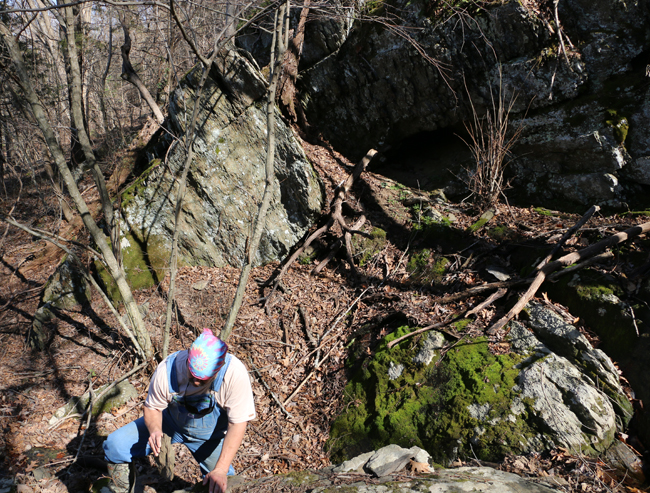
Can you spot bedding and cleavage in these images?

Here, I’ll help tease it out for you:
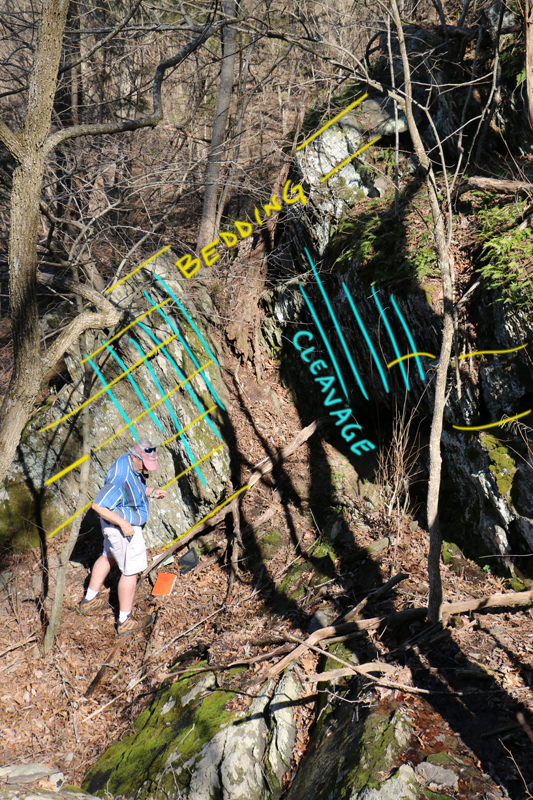
The bedding is Devonian, when this part of Virginia was a deep marine basin, with fine silt and clay slowly sifting in, making the massive mud rock called the Mahantango Formation.
The cleavage is a tectonic “overprint” imposed on these rocks more recently, when Africa rammed into eastern North America in a profound event called the Alleghanian Orogeny. That was in the late Paleozoic, Pennsylvanian and Permian.
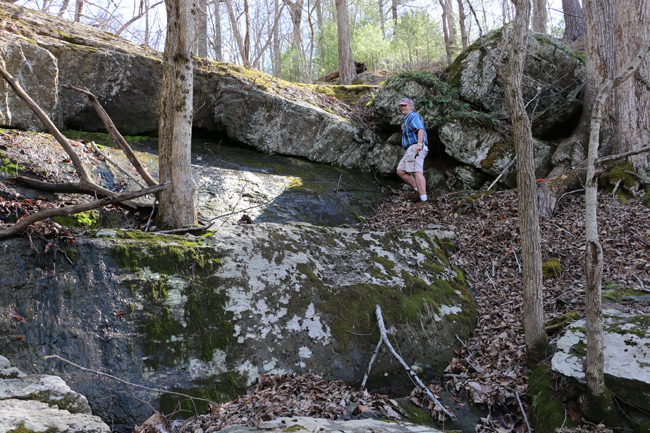
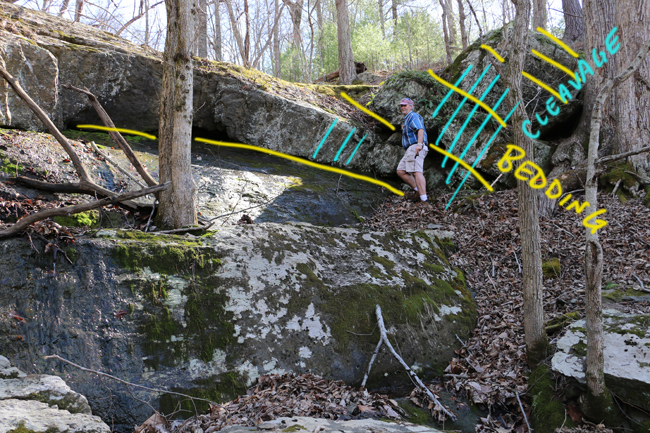
The bedding was laid down sometime around 392 to 385 million years ago. The cleavage developed as these rocks were squeezed almost 100 million years later, around 300-250 million years ago. You can’t deform something unless it already exists.
Bedding can be identified in these relatively unstratified mud rocks by horizons of shelly material, like this:
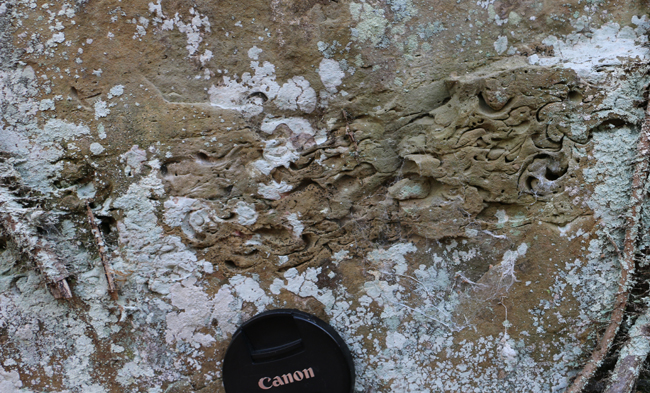
Most of the fossils are brachiopods, including prominent Devonian index fossil Mucrospirifer, here seen as an internal mold:
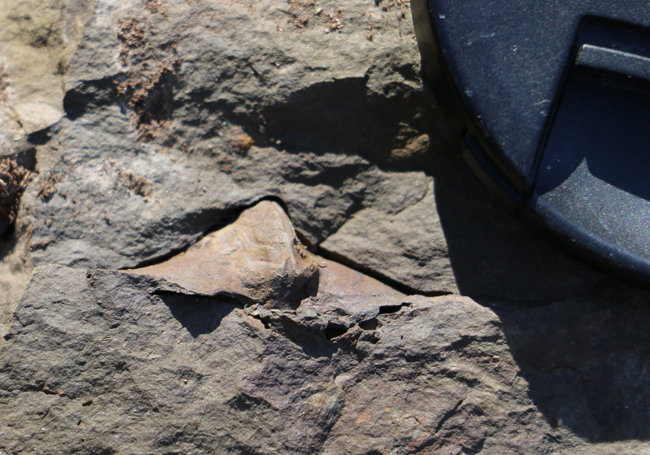
The brach-rich beds are studded with these chunky shells. Here’s a view looking up at the bottom of a bed:
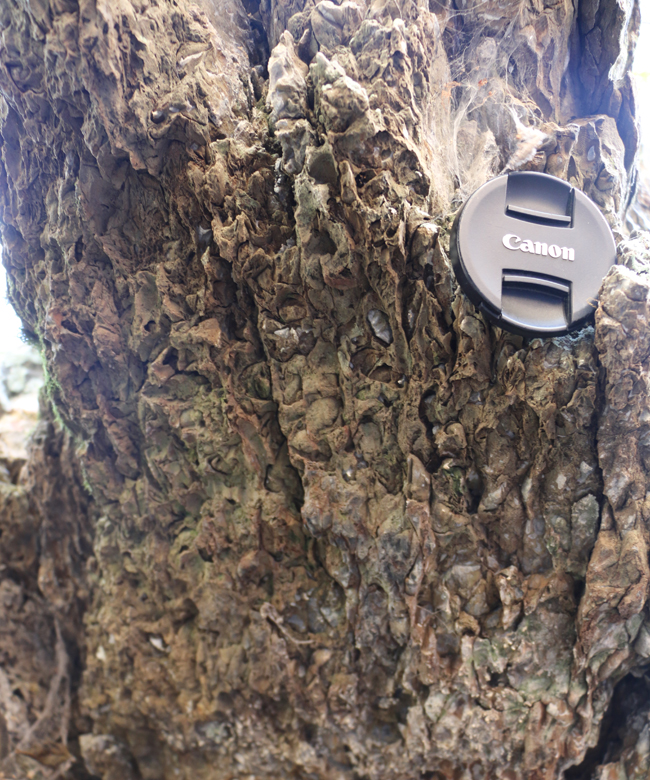
Here’s the trace of another bed:
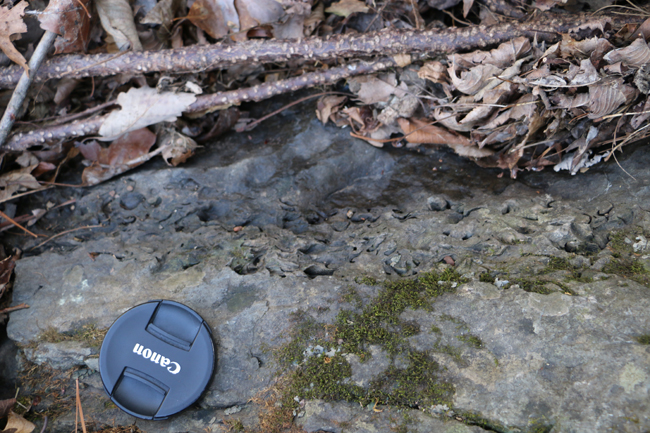
And a sample that broke out in a slab-like shape defined by the cleavage, with just a nubbin of bedding left on the bottom. It shows distorted spiriferid brachiopods, with their shape changed due to Alleghanian squeezing, the same circumstance that caused the cleavage to develop:
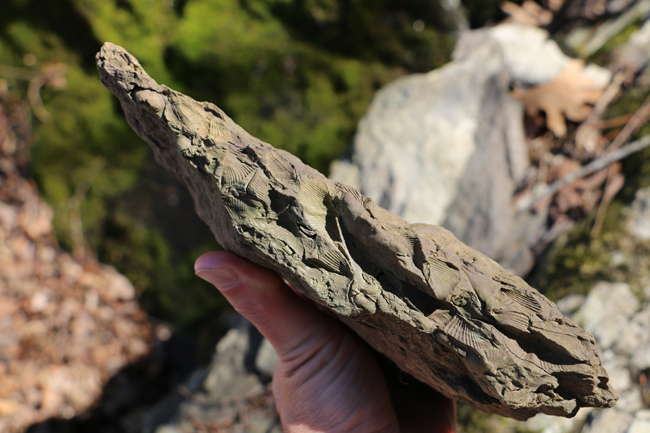
Here’s a wall that shows both bedding (inclined moderately to the left) and cleavage (inclined steeply to the right):
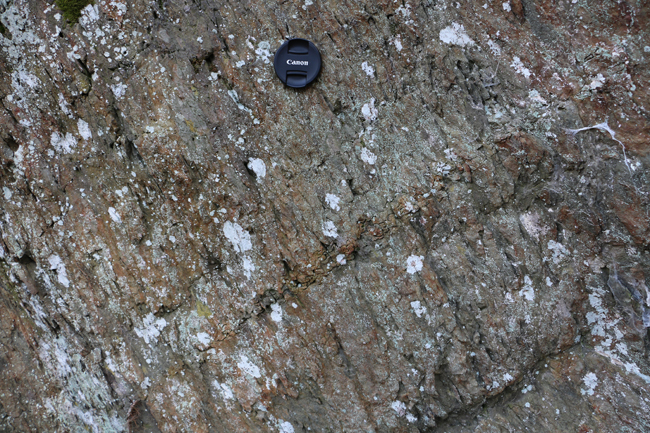
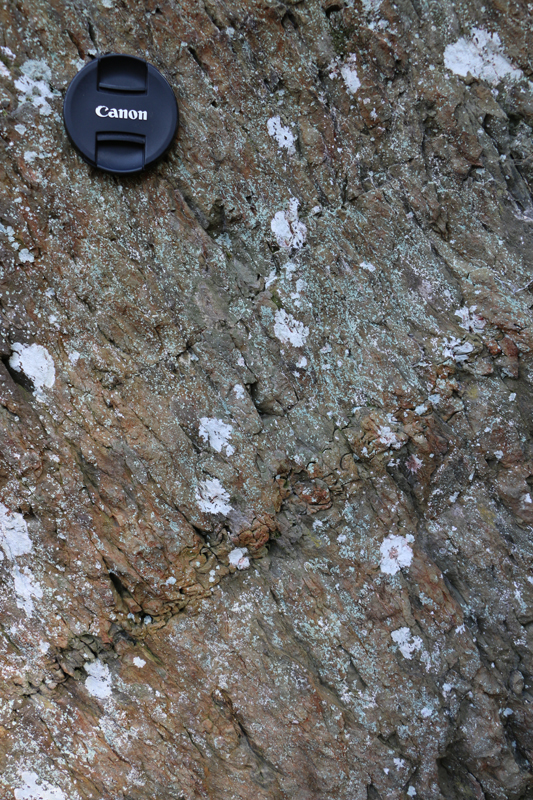
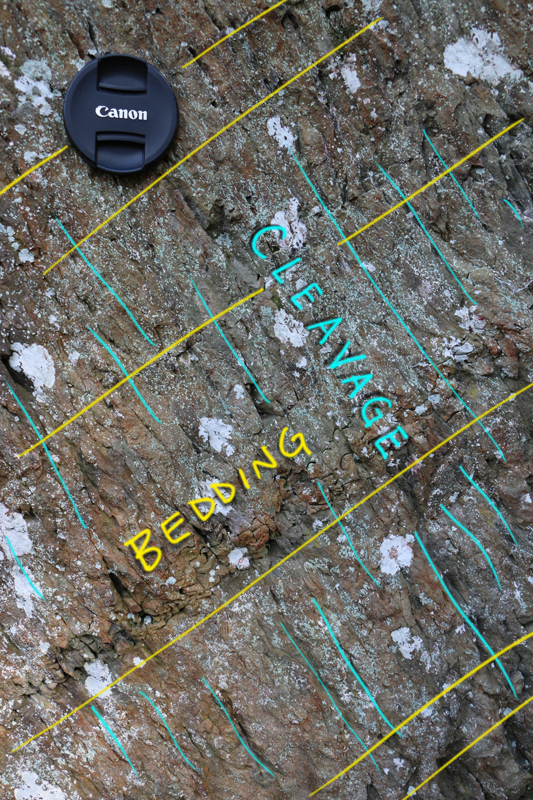
Same wall, but with sun shining on it:
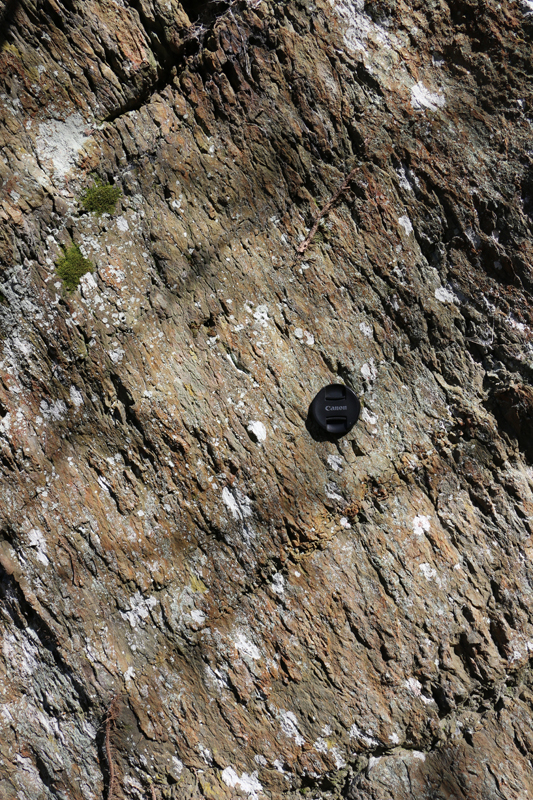
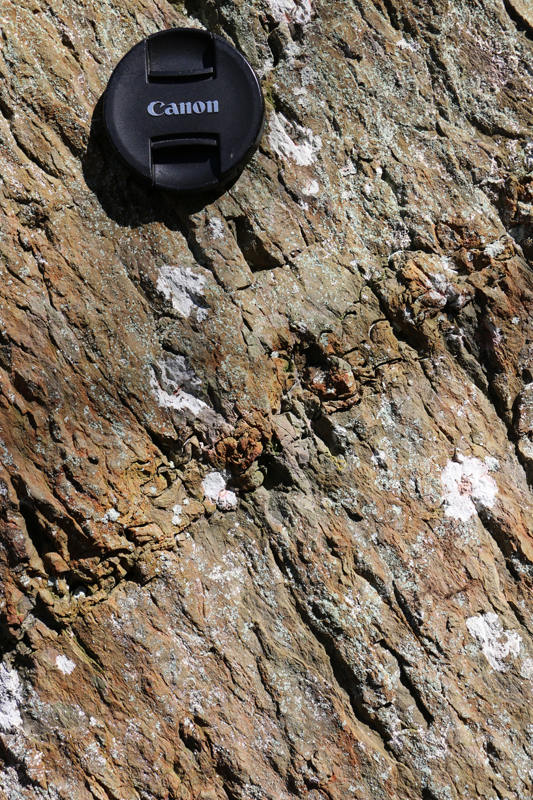
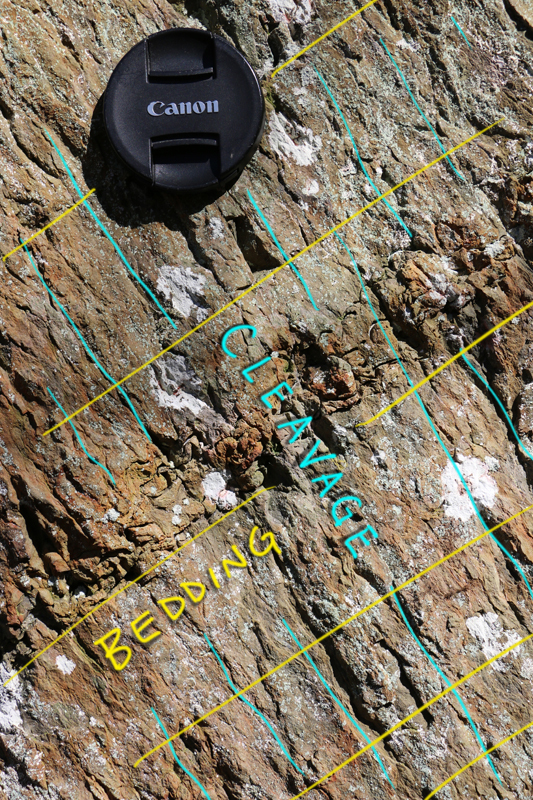
Here’s a look down on a fossil-free bedding plane, and you can see anastomosing traces of cleavage overprinting it:
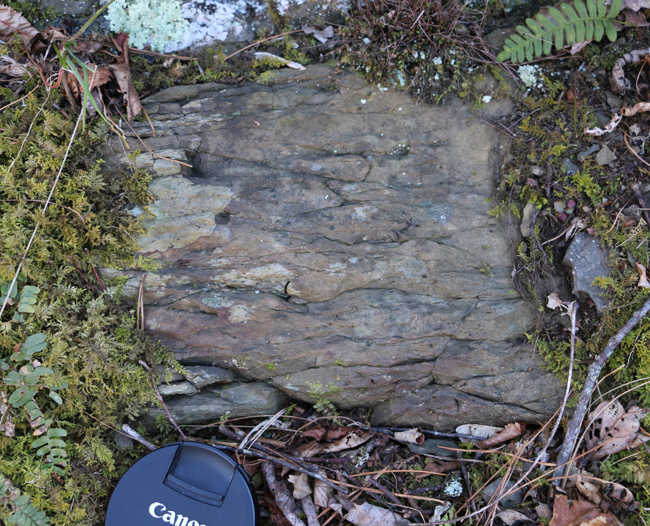
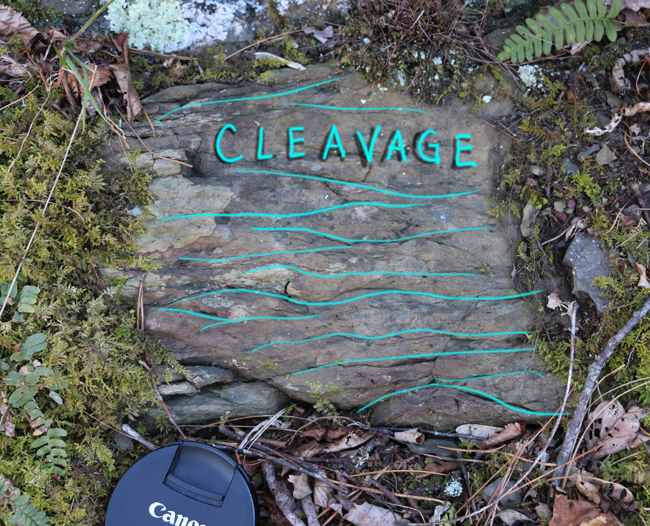
We were able to measure the orientation of both bedding and cleavage here, and add that data to the map. Both strike NNE, but as seen above, the two planar features have opposite dips. The bedding dips WNW, while the cleavage dips ESE. The cleavage is a tectonic “scar” that reflects the injurious birth of the supercontinent Pangaea. Rock splits into flakes today because Africa squeezed it 300 million years ago… Intense.


 Callan Bentley is Associate Professor of Geology at Piedmont Virginia Community College in Charlottesville, Virginia. He is a Fellow of the Geological Society of America. For his work on this blog, the National Association of Geoscience Teachers recognized him with the James Shea Award. He has also won the Outstanding Faculty Award from the State Council on Higher Education in Virginia, and the Biggs Award for Excellence in Geoscience Teaching from the Geoscience Education Division of the Geological Society of America. In previous years, Callan served as a contributing editor at EARTH magazine, President of the Geological Society of Washington and President the Geo2YC division of NAGT.
Callan Bentley is Associate Professor of Geology at Piedmont Virginia Community College in Charlottesville, Virginia. He is a Fellow of the Geological Society of America. For his work on this blog, the National Association of Geoscience Teachers recognized him with the James Shea Award. He has also won the Outstanding Faculty Award from the State Council on Higher Education in Virginia, and the Biggs Award for Excellence in Geoscience Teaching from the Geoscience Education Division of the Geological Society of America. In previous years, Callan served as a contributing editor at EARTH magazine, President of the Geological Society of Washington and President the Geo2YC division of NAGT.
I live approximately on the Martinsburg-Edinburg transition, and about halfway between two volcanic dykes. Nearby are the New Market and Lincolnshire formations.Two volcanic dykes cross north and south of me. I have taken geology courses at JMU and am interested in local geology, and I really enjoy the information and photos you provide in your field trip presentations.
Richard